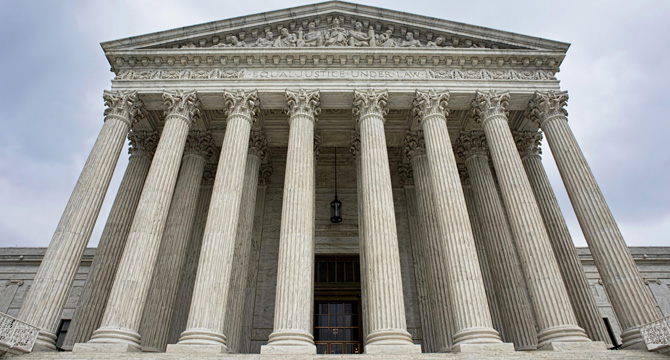
As explained in a prior client alert, two weeks ago the Supreme Court issued its decision in SAS Institute v. Iancu holding that “[w]hen the Patent Office institutes an inter partes review, it must decide the patentability of all of the claims the petitioner has challenged.” The primary significance of SAS is its impact on the Patent Trial and Appeal Board’s (“PTAB”) prior partial institution practice. See e.g., 37 C.F.R. § 42.108(a) (“the Board may authorize the review to proceed on all or some of the challenged claims and on all or some of the grounds of unpatentability asserted for each claim.”). Under SAS¸ and specifically as to claims, the PTAB is no longer able to institute on only some of the challenged claims and any final written decision must address each such claim.
Within two days of SAS, the PTAB issued its Guidance on the impact of SAS on AIA trial proceedings which explained that “[a]s required by the [SAS Institute] decision, the PTAB will institute as to all claims or none. At this time, if the PTAB institutes a trial, the PTAB will institute on all challenges raised in the petition.” (emphasis added). The guidance goes on to explain that “for pending trials in which a panel has instituted trial only on some of the challenges raised in the petition (as opposed to all challenges raised in the petition), the panel may issue an order supplementing the institution decision to institute on all challenges raised in the petition.” (emphasis added). In addition to that guidance, the PTAB held a “Chat with the Chief” webinar on April 30 to discuss the impact of SAS.[1] During that discussion, the PTAB confirmed its statement of “all challenges” includes all claims and all grounds presented in a Petition. Thus, at present, if there is an institution decision on a Petition, it will include in the trial all challenged claims on all challenged grounds.
As to “order[s] supplementing [an] institution decision” for pending proceedings, as of the time of this writing the authors were able to identify 227 such orders for inter partes reviews, post-grant reviews, and covered business method patent reviews. These orders include those that modify the scope of trial to include claims for which trial was not instituted[2], and those to include grounds of unpatentability on which trial was not instituted.[3] Any adjustments to scheduling or the need for additional briefing is being handled on a case-by-case basis depending on the current status of each pending proceeding.[4]
As for new institution decisions, while there is not a statistically significant set from the last two weeks, the institution rate of 65%[5] during that period is consistent with the most recently published PTAB statistics showing an FY18 institution rate of 61%. As for the decisions themselves, at present, the PTAB has been issuing decisions with a similar level of detail as those pre-SAS, including discussions of challenges included in the trial for which the Petitioner has “failed to demonstrate a reasonable likelihood of prevailing.”[6]
Thus, the near term practice of the PTAB in response to SAS has been predictable in view of its own guidance, but the PTAB’s response is only one piece of the overall AIA proceedings equation. A more extended period of time will show how Petitioners and Patent Owners respond to the change in institution scope, including any strategic changes for Petition filings and Preliminary Patent Owner Responses. In this respect, Foley is planning a webinar to cover these and other topics for around mid-June, which will be announced shortly.
[1] The slides from that presentation are available here.
[2] See e.g., Samsung Elecs. Co., Ltd., et al. v. Image Processing Techs. LLC, IPR2017-00336, Paper 37 (May 4, 2018)
[3] See e.g., Itron, Inc. v. Smart Meter Techs, Inc., IPR2017-01199, Paper 22 (May 4, 2018).
[4] See id. at 2 (discussing procedure for requesting schedule changes and additional briefing); see also Nevro Corp. v. Boston Scientific Neuromodulation Corp., IPR2017-01812, Paper 24 (May 1, 2018) (extending Patent Owner Response and Motion to Amend due date by one month and doing so approximately one month before the due date when adjusting trial to include new challenges).
[5] Total of 48 decisions since April 25: 31 Instituting Trial, 17 Not Instituting Trial
[6] See e.g., Precor Inc. v. Green Fitness Equip. Co., LLC, IPR2018-00085, Paper 8, 17 (April 26, 2018); see also Grünenthal GMBH v. Antecip Bioventures II LLC, PGR2018-00001, Paper 17, 26 (May 1, 2018).
